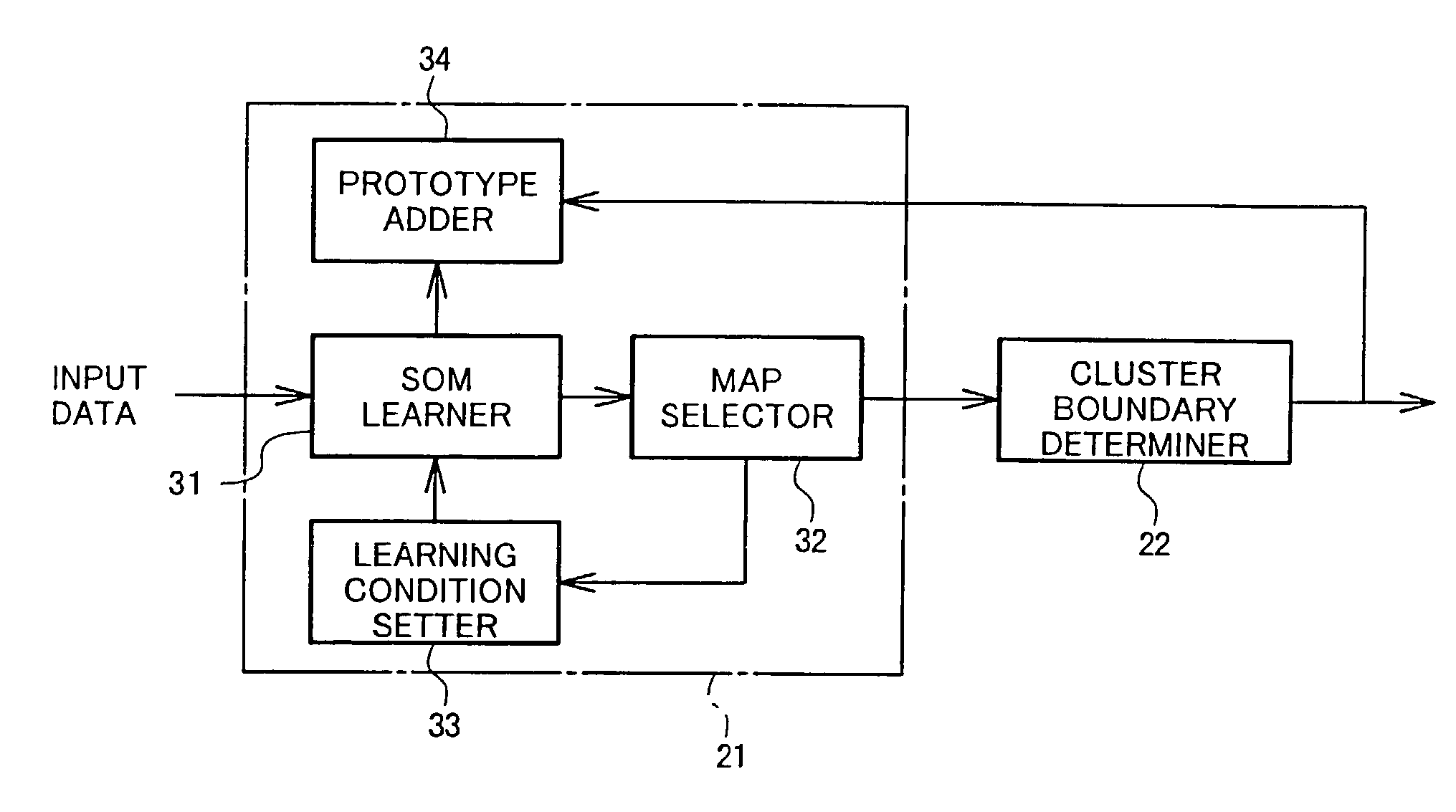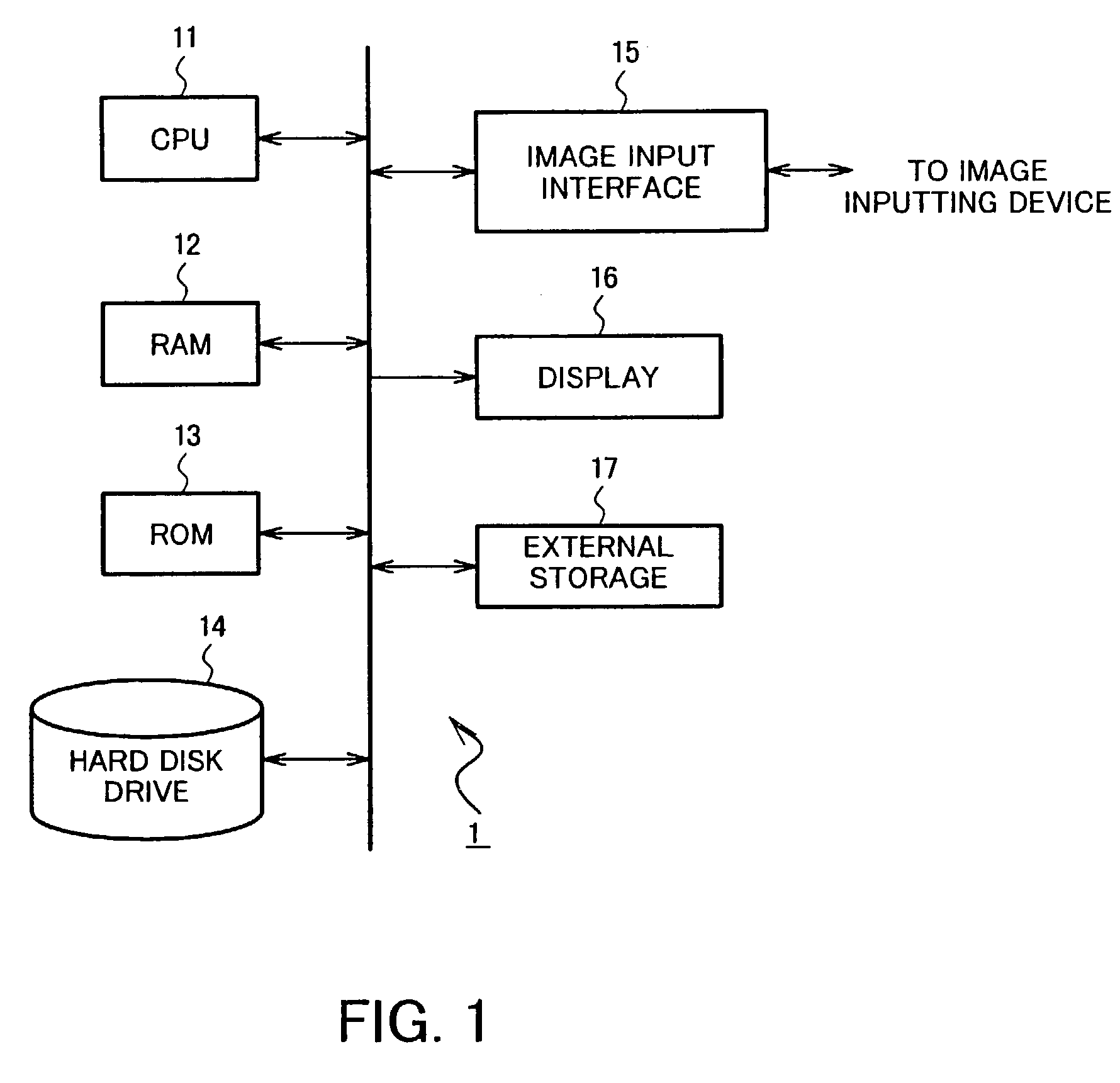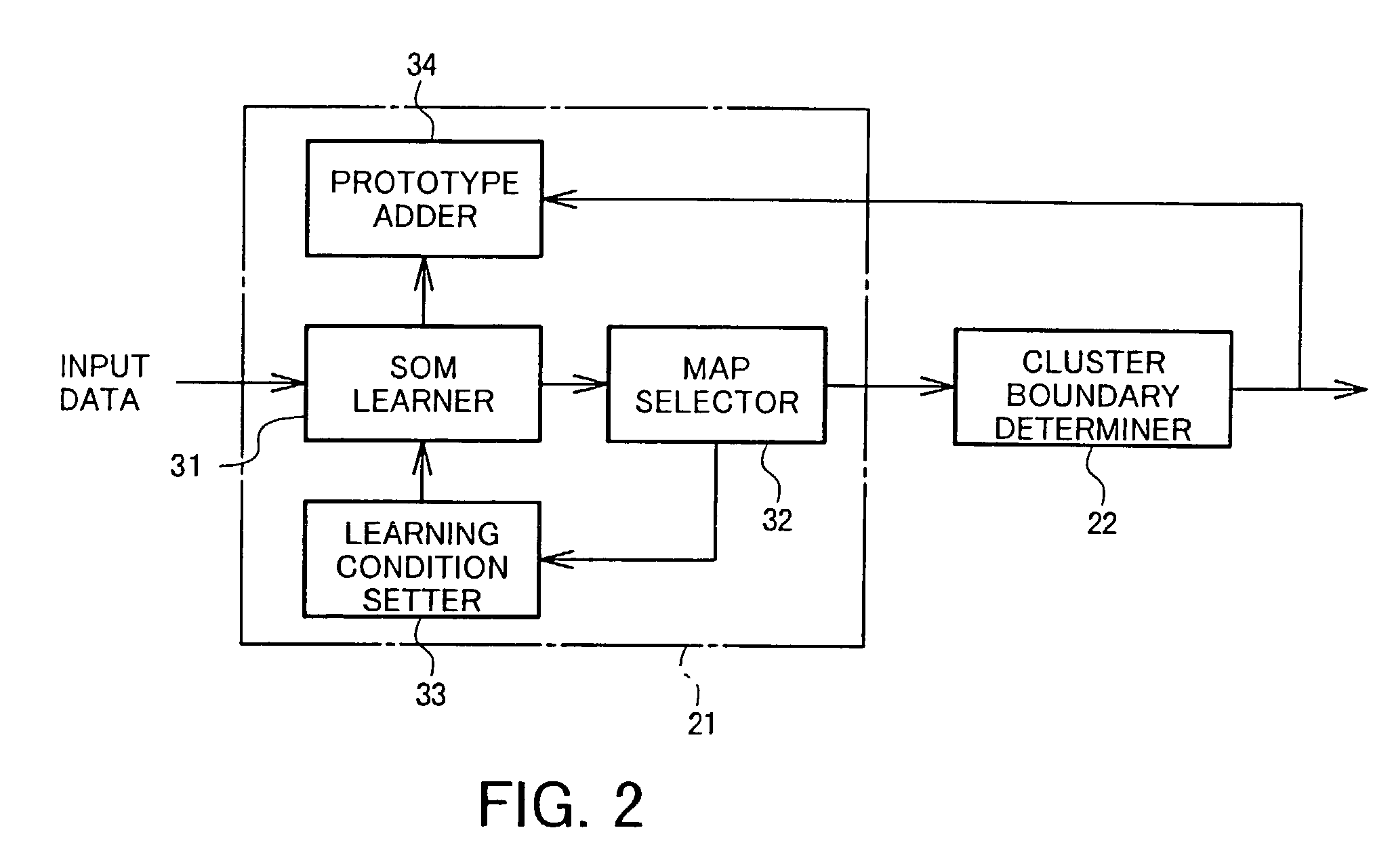Data classifier using learning-formed and clustered map
a data classifier and clustering technology, applied in the field of data classifiers, can solve the problems of increasing learning time, erroneous classification, and not allowing immediate execution of autonomous data classification
- Summary
- Abstract
- Description
- Claims
- Application Information
AI Technical Summary
Benefits of technology
Problems solved by technology
Method used
Image
Examples
specific example
[0083]An example of addition of a new prototype according to the present embodiment will now be described. 700 image data to be classified into two categories, “eye” and “nose”, were prepared and a learning process was performed using a prototype map having 3×3=9 prototypes. For simplicity, one set of learning condition parameters was used (and therefore one map was used) with the parameters set at α(t)=0.2, σ(t)=2.0, and 10000 repetition for SOM learning using the 700 patterns. As a result of cluster boundary determination for a prototype map obtained with the above conditions, cluster boundaries as shown in FIG. 7 were formed. A data classification process was performed using this map, and it was found that 15 patterns from among the 700 patterns were erroneously classified.
[0084]Then, new prototypes were added as shown in the a-state in FIG. 8 on the cluster boundary (represented by “New” in FIG. 8), and an additional learning process was performed with α(t)=0.002, σ(t)=1.0, and ...
PUM
 Login to View More
Login to View More Abstract
Description
Claims
Application Information
 Login to View More
Login to View More - R&D
- Intellectual Property
- Life Sciences
- Materials
- Tech Scout
- Unparalleled Data Quality
- Higher Quality Content
- 60% Fewer Hallucinations
Browse by: Latest US Patents, China's latest patents, Technical Efficacy Thesaurus, Application Domain, Technology Topic, Popular Technical Reports.
© 2025 PatSnap. All rights reserved.Legal|Privacy policy|Modern Slavery Act Transparency Statement|Sitemap|About US| Contact US: help@patsnap.com



